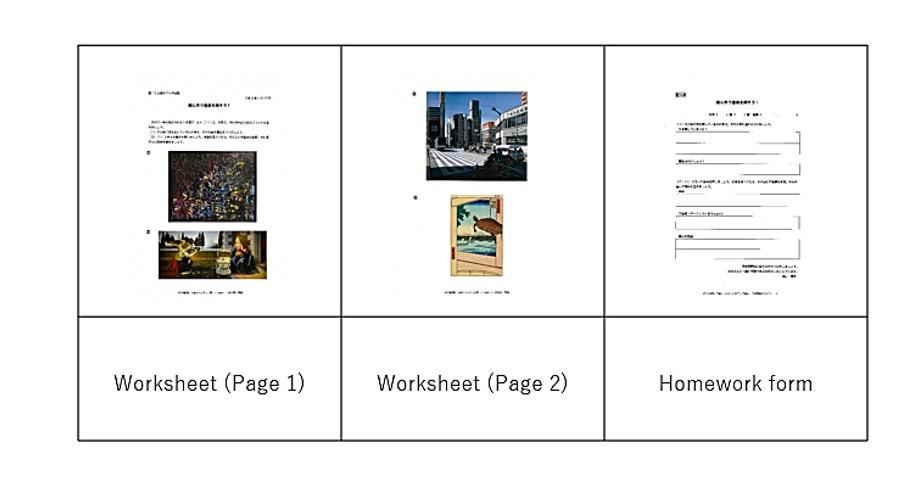| Organization | The National University Corporation Tokyo Gakugei University Takehaya Elementary School |
|---|---|
| Title | Let’s add music to drawings and movies |
| City, Country | Tokyo, Japan |
1.Overview
The lessons were planned with the aim to make students engage in music and utilize what they have learned about how to enjoy and understand music by selecting pieces of music suitable for certain drawings or movies. The project was implemented in the three steps as below with the focus on the following two points to keep students learning in the COVID-19 crises. Firstly, the guidelines for synchronized and asynchronized contents were clarified. In the synchronized program, students learned skills and knowledge required for progressing their learning and deepened their learning by watching and listening to outputs of themselves or friends. In the asynchronized program, the focus was put on self-learning by each student. Secondly, we asked students to submit their works via an online file sharing system. All the tasks of this program were done on PC or tablet device (excluding some exceptions) and we thus decided to ask students to submit their work data via the online file sharing system.
2.Contents of learning
(1) First step: Select a piece of music that fits drawings (during the school closure period, asynchronized: working on tasks)
Music teacher and art and handicraft teacher jointly gave their students a homework to “select a piece of music that fits drawings.” The art and handicraft teacher selected drawings and music teacher prepared worksheets using the drawings, and students worked on their tasks written in the worksheets.

(2) Second step: Find a drawing by using music as a clue (after reopening of school, synchronized: guess a drawing based on the piece of music that friends selected)
In the quiz style as “find a drawing by using music selected by your friend as a clue,” tasks that each student worked on were shared by all students in the classroom. While enjoying the piece of music selected by one of their friends, students considered the piece of music was for which drawing. When giving answers, students were asked to add reasons why they selected one drawing for the piece of music they listened to, for example, “This piece of music is fast and has regular rhythm, so I picked this drawing with urban landscape.”
(3) Third step: Find a piece of music that fits movies (after reopening of school, asynchronized: working on tasks, synchronized: enjoy friends’ creation)
Every student was asked to present his/her creation in front of all class members. Students added music to the movies not only by selecting a piece of music but also considering the timing to insert the music, how to finish the music, changing music by scene, using sound effects or sounds recorded by themselves, among others, which were well beyond the teacher’s instruction.
3. Conclusion
Through the lessons, students verbalized what they interpreted or felt from music in a variety of scenes. As a result, while they used to understand music vaguely as “It feels like XX,” they became able to explain their impressions of music structurally like “The piece sounded like urban music because of its high tempo and regular rhythm.” In addition, they reported that they listened to many pieces of music using the impressions of drawings to find one that fits the movies to complete their task. Despite of the simplicity of the lessons, to add music to drawings and movies, students seemed to listen to various pieces of music until they found the one with which they can be satisfied, consider which part they use, how to start, and how to end by trial and error. It is a hard time for learning the music subject, but we recognized through the lessons that pursuing “children’s self-willingness to engage in music” without being constrained with conventional concept of music lessons is important in considering optimal lesson contents in the with-COVID-19 and after-COVID-19 society.







